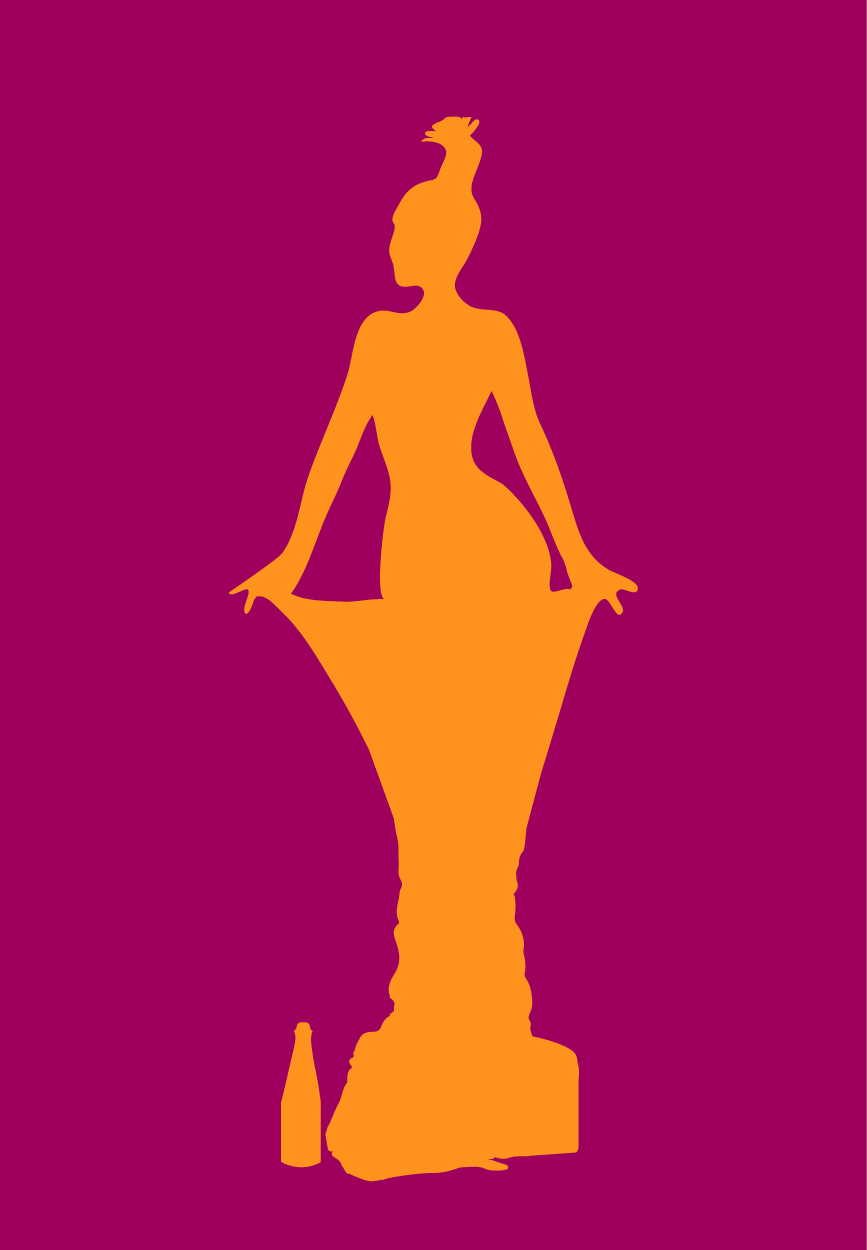
What does it take to be famous in this day and age? Apart from a smartphone and a dose of narcissism, not much else. The Internet – the original celebrity incubator – has been hatching celebrities nearly as long as people have had bad taste, but it would appear to be getting easier than ever to achieve a level of stardom.
Jeremy Meeks, the handsome criminal whose steely eyed mugshot sparked #FelonCrushFriday (landing him a modelling contract while still in jail) is hardly an exceptional case anymore. Seventeen-year-old Nash Grier (who?) is one of the world’s biggest social media celebrities. Purely by association, his five-year-old half-sister Skylynn Floyd had 1.3 million followers on Vine before she started school. Literally anyone can be famous. The only thing that separates Meeks from the who’s who of young hopefuls is the fact that fame found him.
If as Lord Byron once said, fame is the thirst of youth, then the current crop is parched. Kids have grown up following their heroes on Youtube, Instagram and Twitter and understand that with enough followers what happened to Justin Bieber could happen to them. Their understanding is all it takes is to be online, in some capacity, as much as possible.
“Images of celebrities are flooded through mass media,” says Jackie Raphael, a board member at the Centre for Media and Celebrity Studies (CMCS). And while consumers are accustomed to seeing them on television and magazines, they are now being bombarded with these images through social media 24/7. “By sharing a virtual space with celebrities, fans draw a greater comparison between themselves and the celebrity than they would have done seeing them on the cover of a magazine.”
The latest wave of live streaming apps is making this more possible than ever before. They are the live evolution of Youtube’s user-generated content revolution, in that anyone with a camera-phone can stream the world in front of them, scripted or unscripted. Meerkat and Twitter-owned Periscope are the two rival big hitters. They’re both live streaming video apps which link to a user’s Twitter account to broadcast and watch video content from around the world. Both apps allow viewers to comment on the footage they're watching, see how many others are spectating alongside them, and indicate their approval through a ‘like’ on Meerkat or a ‘heart’ on Periscope. It’s the next best thing to actually being there.
It’s perhaps the immediacy of these apps that has propelled more than a few nobodies to world fame seemingly overnight. Periscope’s ‘first star’, 25-year-old illustrator Amanda Oleander (dubbed the Kim Kardashian of the social platform) took four years to get 2,000 followers on Instagram; it took her four days to equal that on Periscope. Oleander now has over 250,000 followers (and over 30 million hearts) and broadcasts upward of five times a day. She might stream for 20 minutes in her car, 30 minutes while she's painting, or an hour while she visits one of her favourite spots in downtown Los Angeles. It’s pretty mundane on the whole but she’s personable and now more than 1,000 people tune in to each stream.
In the opposition camp meanwhile, there can be no argument over who holds the Meerkat crown. Meerkat Stats is a website that scores users based on their followers and likes, and ranks them accordingly. “I've always been inspired by success stories like Kandee Johnson and Brittany Furlan [ranked 21st in Time magazine’s list of the most influential people on the Internet],” says Victoria Fratz, (ranked 5th on Meerkat Stats, one place behind Madonna). Before Meerkat, Fratz was still a wannabe. “Years ago there was no such thing as a social-media celebrity, now these girls get to be themselves 100% of the time on-camera. It really inspires me to see that you can be your complete and silly self while still achieving great success in entertainment.”
For those with little discernible talent it all comes down to being yourself, and live streaming is the perfect platform for the individual to project themselves doing just that. “The search for this kind of fame is an obsession in the sense that it shifts attention from merit-based talents and abilities,” explains Dr Samita Nandy, Director at CMCS. “The sheer desire to achieve fame without unique talents is an expression of obsession.” People think that if they become famous that it will end their loneliness, that they’ll be loved For better or worse, ‘what you see is what you get’. Reality TV has provided a portal to the grittier aspects of celebrity life for years, but the Youtubes and Instagrams of the social-media world allowed celebs to sugar coat their images. Consumers are hungry for what goes on behind the scenes; it’s this insight that let’s fans feel like they really know their idols. “With the rise of social media, celebrities can now connect with fans in a way that can subvert their false representations in tabloid media,” explains Nandy. “I would say authenticity, even in its mediated form, is what drives the famous to be constantly connected to their fans.”
Unlike Youtube, Vine or Instagram, live streaming offers no editing suite and certainly no retakes, and this establishes a genuine connection between filmer and fans. Fans means likes and likes mean chart position. Ranking socialites might sound like a way to further massage the egos of those concerned, but in actual fact it serves as a go-to list for brands seeking exposure. Companies such as Virgin Mobile can pay up to $100,000 for placement in one of Nash Grier’s six-second Vines. Elsewhere, Nestlé will be the first brand to advertise on Periscope; they’ve hired a handful of notable personalities from the platform (including 17-year-old consumer electronics reviewer Keaton Keller) to broadcast ice cream eating scenes.
Is it cynical to think the kids are just in it for the money? Maybe, a lot are in it purely for the ‘likes’, but what’s troubling is how online popularity doesn’t always translate IRL. Social media offers the illusion of companionship without the demands of friendship. Consumers are turning to technology to help them feel connected in ways they can comfortably control and for the most auspicious users, it doesn’t take long to get followings in the millions.
Curious to know who the people were that were littering their ‘popular’ pages on Instagram, strategist Joey Camire and a team from consultancy agency Sylvain labs, made Instafame, a documentary exploring the lives of teenagers who had acquired notoriety online and how it had affected their lives. “We wanted to know what it did to someone when everything they did was met with positive feedback,” says Camire. “Did it make them callous? Conceited? Disconnected? Delusional? This new dynamic didn’t seem like it would help the precarious place that your psyche sits when you’re embroiled in becoming an adult.”
What’s perhaps surprising about the film is how whimsical the stars understand their fame to be. The film’s protagonist, 15 year old Shawn Megira spends his weekend’s strolling round his local mall, signing autographs and posing for pictures but when asked how he’d feel if all of social media was to end, Megira replied, “I think I would feel the same as I feel now, just going on with my life.”
During our teens, there’s nothing we want more than to be popular. Social media allows us collect friends like stamps and it’s easy to fall into the trap of thinking the more the better. However, a number of studies have shown that chasing fame will in fact perpetuate loneliness and in turn isolation. “People think that if they become famous that it will end their loneliness, that they’ll be loved,” says Camire. “But these social media connections are no substitute for deep human connections. One is a flat simulacrum for one of the most profound human experiences there is.”
In her 2011 book Alone Together, Professor Sherry Turkle looked at how our use of technology is fuelling disturbing levels of isolation, leaving us incapable of distinguishing between true human connection and digital communication. In it she puts a sad twist on the old Descartes musing: “I share, therefore I am.” Perhaps, “the more I share, the more I am” is just as fitting nowadays.
Illustration Josiah Jones


